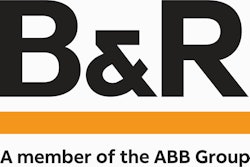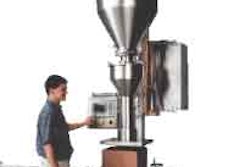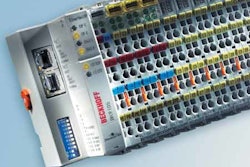This was among the observations made by Markus Sandhofer, sales manager at controls technology supplier B&R and a speaker at the upcoming Conference at Pack Expo, when I called to ask him for a sneak preview of his Pack Expo presentation.
“I know of a European OEM that was supposed to deliver a machine to a food manufacturer,” said Sandhofer. “But the food manufacturer didn't like the controls system and asked for a change. ‘We have a significant investment in spare parts and training that are designed for the controls system that we typically specify,' said the food manufacturer. The OEM pointed out that if it were forced to adopt the food manufacturer's controls spec, the finished machine would be 30% less functional. So the food manufacturer relented, and the OEM pushed through with its own preferred controls architecture.”
Here are other observations made by Sandhofer that he will explore in more detail at Pack Expo:
• The controls system is increasingly the means by which a packaging machinery OEM differentiates itself. It used to be the mechanics, but that's been replaced by the electronic line shaft. Now you have 10 servo motors replacing one big motor and its mechanical linkages.
• Packaging machines used to have a lot of cables going to a controls cabinet, which was itself a centralized controls system. Today you're more likely to see fast, real-time Ethernet communications systems that let you put I/O next to the sensors and use remote I/O as if it were rack-built I/O. It's another example of how machine builders are using new technology to differentiate themselves from the competition.
• More and more end users are expressing interest in OMAC guidelines or working with Make2Pack. What they want is interoperability on the controls side and on the way in which the controls are programmed.
• The PackSoft Committee of the OMAC Packaging Workgroup looked for ways to use uniform programming tools across multiple platforms. They found IEC 61131-3 programming language is one way to do that. Then they found a big need in motion control, because motion control is very diverse these days in terms of programming. They found that PLC Open filled the bill. A lot of machine builders like it because it lets them learn one concept and apply it regardless of the controls vendor. You don't need to learn different languages if they move to a new motion control vendor. Portability of code is gained.
• Make2Pack is an initiative aimed at putting the packaging machinery OEM in a position where he focuses not on how to program a machine but rather on how to give the machine better functionality for the buyer. Make2Pack seeks to break down big chunks of monolithic code into small modules that can be reused. This benefits the end user because he can get a machine built and delivered faster if the OEM doesn't need to spend as much time programming. It benefits the OEM because he has the freedom to select whatever controls vendor he likes.
• To succeed in this increasingly competitive and global marketplace, packaging machinery OEMs in North America need to be more self-sufficient in choosing their controls architecture, and they must adopt greater modularity in their machine code.





























